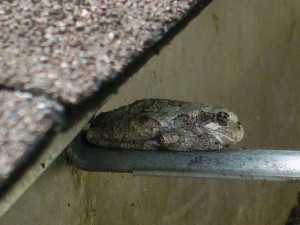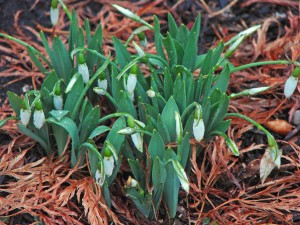
This wonderful vegetable, one of the oldest edible sources known to mankind, found in a bewildering array of recipes and preparations, be it your favorite salad, gravy or curries. It has also been in use in traditional medicines since ancient times for health-promoting curative properties. Onions are a cool-season vegetable that can be grown successfully through most of Temperate America. They may be started from seed, sets, or transplants. What starts onions to enlarge is day length. This is in March April. Different varieties of onions require different day lengths. Local garden centers will have the proper varieties for your area. The normally sweet onions that are grown in the south take a longer growing season to turn the starches into sugars.
“An Onion a Da
Onions, one of the most versatile vegetables, are one of many popular members of the nutritious allium family. Shallots, garlic, green onions, leeks, and chives are other well-known cousins, and they all have extraordinary health benefits. They each contain flavonoids, natural antioxidants that may help to prevent many diseases including cancer and heart disease. Garlic, in particular, stands out for its ability to lower cholesterol and blood pressure and reduce the risk of blood clots and infection. Alliums are also antifungal and antibacterial which means they can fight viruses that can lead to the flu and colds, and relieve upset stomach and other gastrointestinal disorders. To maximize their benefits, it is recommended that alliums be eaten raw, but cooking doesn’t entirely diminish their effects. ”
Soil Preparation
Onions are grown in almost any type of soil; a soil high in organic matter and well-drained is preferred. Add rotted manure, compost or other organic matter the fall preceding the spring crop and work into the soil.
Fertilizer
Get a soil sample before starting in spring. Then you will know exactly what your soil needs and how much. Apply a fertilizer that is high in phosphorus and potassium such as 6-24-24 at 4 to 5 pounds per 100 square feet. This is always good for root crops if you have not had a soil sample. As the crop grows a side dressing of fertilizer,10-10-10, 1# per 10 feet at 2 -3 inches from rows. Another suggestion is after onions are actively growing put down compost this will restrict the weeds and add some fertilizer to the plants.
Planting
Plant onions as early when the soil is dry enough to be worked in the spring since light freezes do not injure them. Later crops can be started up to May 15 but early planting is advantageous for larger bulbs and better storing onions. Planting for green onions can be made at any time. The minimum spacing of rows is 12 to 15 inches apart.
Seed
Sowing every from seed takes a long time and usually good for green onions only. Thin down to 3-4 inches apart allowing onions to enlarge.
Sets
Sets are small dormant bulbs planted directly into the garden. They should 1 to 2 inches deep 2 to 3 inches apart. Thin to 3 to 4 inches apart as they grow. Those that are removed can be used as green onions. Sets come in red, yellow, and white. Taste and flavor can vary do to cultivars types.
Larger sets tend to bolt more easily. Use these as green onions. Smaller bulbs tend to make larger onions.
What causes onions to enlarge is a combination of day length and temperature. Day length is the trigger, however, if there are cold temperatures the onions will not enlarge satisfactorily.
Transplants
Plant roots 1 inch deep or lower to make the white portion greater in white onions plant deeper. Transplant the seedlings outside in early April. They will damage if temperatures are less than 20 degrees F.
Winter storage onions should be planted in early May.
Harvest
Green onions can be harvested any time after the plants are 6 inches high. Larger onions can be harvested any time after the tops fall over. The longer it takes the sweeter the onion. Once harvested the can be stored in a cool dry area with lots of air circulation, like hanging in a potato sack from the rafters.
| See the table below for an in-depth analysis of nutrients: Onion (Allium cepa), raw, Nutrition value per 100 g. (Source: USDA National Nutrient database) |
| Principle |
Nutrient Value |
Percentage of RDA |
| Energy |
40 Kcal |
2% |
| Carbohydrates |
9.34 g |
7% |
| Protein |
1.10 g |
2% |
| Total Fat |
0.10 g |
0.5% |
| Cholesterol |
0 mg |
0% |
| Dietary Fiber |
1.7 g |
4.5% |
| Vitamins |
|
|
| Folates |
19 mcg |
5% |
| Niacin |
0.116 mg |
1% |
| Pantothenic acid |
0.123 mg |
2.5% |
| Pyridoxine |
0.120 mg |
9% |
| Riboflavin |
0.027 mg |
2% |
| Thiamin |
0.046 mg |
4% |
| Vitamin A |
2 IU |
0% |
| Vitamin C |
7.4 mg |
12% |
| Vitamin E |
0.02 mg |
0% |
| Electrolytes |
|
|
| Sodium |
4 mg |
0% |
| Potassium |
146 mg |
3% |
| Minerals |
|
|
| Calcium |
23 mg |
2% |
| Copper |
0.039mg |
4% |
| Iron |
0.0.21 mg |
3% |
| Magnesium |
10 mg |
2.5% |
| Manganese |
0.129 mg |
5.5% |
| Phosphorus |
29 mg |
4% |
| Zinc |
0.17 mg |
1.5% |
| Phyto-nutrients |
|
|
| Carotene–ß |
1 mcg |
— |
| Crypto-xanthin-ß |
0 mcg |
— |
| Lutein-zeaxanthin |
4 mcg |
— |
Nutrition
The phytochemical compounds allium and Allyl disulfide in onions have anti-mutagenic (protects from cancers) and anti-diabetic properties (helps lower blood sugar levels in diabetics. They are a rich source of chromium, the trace mineral that helps tissue cells respond appropriately to insulin levels in the blood; thus helps facilitate insulin action and control sugar levels in diabetes. are also a good source of the antioxidant flavonoid quercetin, which is found to have anti-carcinogenic, anti-inflammatory and anti-diabetogenic functions. They are also good at antioxidant vitamin, vitamin C and mineral manganese which is required as a co-factor for anti-oxidant enzyme superoxide dismutase. In addition, isothiocyanate anti-oxidants help relieve cold and flu by exerting anti-inflammatory actions. Onions are also good in a b-complex group of vitamins like pantothenic acid, pyridoxine, folates and thiamin. Pyridoxine or vitamin. B-6 helps keep up GABA levels in the brain which works against neurotic conditions.
Nutritional Analysis
Good points
- Very low in saturated fat
- No cholesterol
- Very low in sodium
- High in dietary fiber
- High in manganese
- High in potassium
- High in vitamin B6
- Very high in vitamin C
Bad points
Very high in sugar




